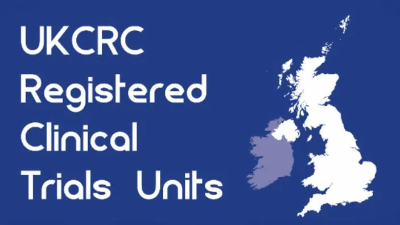
- Cancer
- Trials closed
MoNET
Molecular profiling of post-menopausal women with breast cancer on Neoadjuvant Exemestane or Tamoxifen
Research summary
Around 60-70% of the breast cancers are oestrogen receptor-positive (ER) and these cancers respond to anti-oestrogen therapy (response rate 30-70%). Post-menopausal women achieve a smaller benefit from chemotherapy as demonstrated by the Early Breast Cancer Trialists Collaborative Overview compared to younger patients and as a group may have co-morbidities that make toxicity from chemotherapy unacceptably high. Neoadjuvant or primary endocrine therapy (NAET) is a treatment option with several advantages in these patients.
For women whose cancers are large (>4cm) and motivated to have breast conservation, neoadjuvant endocrine therapy can help to downstage cancer thereby allowing breast-conserving surgery. In the largest NAET trial, 55% of women judged initially to be unsuitable for breast-conserving therapy were able to avoid a mastectomy and undergo successful breast-conserving surgery after 4 months of endocrine therapy.
Patients with locally advanced breast cancers (large tumours that have invaded into the skin or are tethered to muscle, or with extensive axillary lymph node involvement) pose a difficult surgical problem. Mastectomy may be technically demanding and there is a high risk of local relapse. So NAET can be used to downstage tumours to allow surgical resection. In a recent NAET trial, which included 93 women with T4 tumours, 91% were able to undergo surgical treatment after 3 to 6 months of tamoxifen.
There is a theoretical advantage to having endocrine blockade at the time of surgery because it may inhibit the release of various growth factors (vascular endothelial growth factors, epidermal growth factor, tumour necrosis factors for example) that can potentially promote tumour growth.
During NAET tumour measurements are useful for evaluating the efficacy of the treatments and repeat core biopsy of the tumour is helpful for molecular profiling. It is therefore a good platform for assessing new agents and discovering new biomarkers. Effective agents in the neoadjuvant setting could be incorporated into treatment protocols sooner leading to faster progress in breast cancer treatment. Pathological complete response (pCR) is validated as a surrogate marker predicting long-term survival in neoadjuvant chemotherapy trials. Another advantage of neoadjuvant trials is that results are available sooner than results of adjuvant trials and fewer patients are needed to test the same hypothesis. The pCR rate is rare with neoadjuvant endocrine therapy and there is a need for more robust intermediate biomarkers to assess response. The best-explored biomarker to address mechanism in the context of neoadjuvant endocrine studies is the proliferation marker, Ki67 as measured by immunohistochemistry. This cell cycle-regulated protein usually shows a dramatic decrease with endocrine therapy and is measured as a percentage of positive cells or the ‘proliferation index’. Increasingly proliferation marker Ki67 is used as a surrogate marker for response as neoadjuvant endocrine trials have shown this to correlate with the overall outcome.
Neoadjuvant (or primary) endocrine therapy is an ideal platform for predictive or prognostic marker discovery. Although neoadjuvant and adjuvant endocrine therapy are both well-established treatments, their molecular basis remains incompletely understood. There are no predictive or prognostic markers except oestrogen receptor status that can be used to tailor treatment. This study will use neoadjuvant setting as a basis to identify molecular markers of sensitivity and resistance.
Main inclusion criteria
- Women with histological diagnosis of primary invasive breast cancer on core biopsy
- Not a candidate for chemotherapy
- Localised or locally advanced breast cancer
- Ultrasound size of at least 2 cm:
- unifocal tumour:
- T2 or T3 tumours (radiological size more than 20 mm)
- T4 tumour of any size with direct extension to either chest wall or skin
- inflammatory carcinoma with tumour of any size
- unifocal tumour:
OR
- other locally advanced diseases:
- clinical and radiological involvement of axillary lymph node (radiological diameter more than 20 mm) and primary breast tumour of any diameter
- where no primary breast tumour was found, the presence of breast cancer in a Lymph Node (LN) must be histopathologically confirmed by LN biopsy (Tru-cut or whole LN)
OR
- multifocal tumour:
- i. the sum of the tumour diameters must be more than 20 mm (radiological size more than 20 mm)
- ii. patients with bilateral disease are eligible to enter the trial
- iii. no previous treatment for breast cancer
- Oestrogen Receptor (ER) positive (Allred score more than or equal to four)
- Palpable and measurable disease in the breast or axilla
- Post-menopausal defined by the following criteria: cessation of menstrual periods for at least 1 year or bilateral surgical oophorectomy or Follicular Stimulating Hormone (FSH) and oestradiol in the post-menopausal range
- At least 2 weeks since prior hormone replacement therapy or phyto-oestrogens herbal, alternative, or Over-The-Counter (OTC) sex hormone remedies and not on concomitant hormonal therapy with these agents
- Eastern Cooperative Oncology Group (ECOG) performance status zero, one or two
- Randomisation and treatment within 4 weeks of biopsy
- Patient must have adequate bone marrow, hepatic and renal function
- Absence of any psychological, familial, sociological or geographical condition potentially hampering compliance with the study protocol and follow-up schedule; those conditions should be discussed with the patient before registration in the trial
- Written consent for the trial
Funders and sponsors
Chief investigator
Dr Helena Earl






